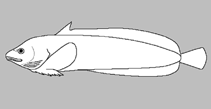http://www.fishbase.org/Summary/speciesSummary.php?genusname=Careproctus&speciesname=aciculipunctatus ---> http://52.67.158.155/Summary/speciesSummary.php?genusname=Careproctus&speciesname=aciculipunctatus
http://52.67.158.155/Summary/speciesSummary.php?genusname=Careproctus&speciesname=aciculipunctatus ---> https://fishbase.net.br/Summary/speciesSummary.php?genusname=Careproctus&speciesname=aciculipunctatus
https://fishbase.net.br/Summary/speciesSummary.php?genusname=Careproctus&speciesname=aciculipunctatus ---> https://fishbase.net.br/summary/Careproctus-aciculipunctatus.html
Careproctus aciculipunctatus

You can
sponsor
this page
Common name (e.g. trout)
Genus + Species (e.g. Gadus morhua)
-

-
About this page
-
Languages
-
User feedbacks
-
Citation
-
Uploads
-
Related species
-


 Upload your
photos
and
videos
Upload your
photos
and
videos
Google image
 No image available for this species;
No image available for this species;
drawing shows typical species in Liparidae.
Classification / Names
Common names
|
Synonyms
| Catalog of Fishes(
genus
,
species
) |
ITIS
|
CoL
|
WoRMS
|
Cloffa
Teleostei (teleosts) >
Perciformes/Cottoidei
(Sculpins) >
Liparidae
(Snailfishes)
Etymology:
Careproctus:
Greek, kara = face + Greek, proktos = anus (Ref.
45335
)
;
aciculipunctatus:
The species name is formed from the Latin words
acicula
(spinule) and
punctatus
(dotted).
.
More on authors:
Andriashev
&
Chernova
.
Environment: milieu / climate zone / depth range / distribution range
Ecology
Marine; bathydemersal; depth range ? - 4100 m (Ref.
27679
). Deep-water
Northeast Atlantic: Porcupine Basin; known only from the holotype.
Size / Weight / Age
Maturity: L
m
?
range ? - ? cm
Max length : 21.0 cm TL (female)
Short description
Morphology
|
Morphometrics
Dorsal
spines
(total): 0;
Dorsal
soft rays
(total): 64;
Anal
soft rays
: 56. The pleural ribs absent; one hypural plate, without slit. Head depth slightly exceeds its width. Mouth terminal. Teeth simple. The near mouth pores are small, round; the chin pores are not adjacent. The gill opening is small. The disk is small, oval, the edge border is narrow, chondral. The disk-anus distance exceeds the disk length by two times. The entire body is densely echinated with very small spinules. The body and the peritoneum are black, the stomach is light with black blood vessels (Ref.
27679
).
Life cycle and mating behavior
Maturity
|
Reproduction
|
Spawning
|
Eggs
|
Fecundity
|
Larvae
Andriashev, A.P. and N.V. Chernova
, 1997. Two new species of liparid fishes (Liparidae, Scorpaeniformes) from the abyssal part of the eastern North Atlantic. J. Ichthyol. 37(7):479-484. (Ref.
27679
)
IUCN Red List Status (Ref.
130435
)
Data deficient (DD)
; Date assessed:
18 April 2014
CITES
Not Evaluated
Not Evaluated
Threat to humans
Harmless
Human uses
FAO - Publication:
search
|
FishSource
|
More information
Countries
FAO areas
Ecosystems
Occurrences
Introductions
Stocks
Ecology
Diet
Food items
Food consumption
Ration
Common names
Synonyms
Metabolism
Predators
Ecotoxicology
Reproduction
Maturity
Spawning
Spawning aggregation
Fecundity
Eggs
Egg development
Age/Size
Growth
Length-weight
Length-length
Length-frequencies
Morphometrics
Morphology
Larvae
Larval dynamics
Recruitment
Abundance
BRUVS
References
Aquaculture
Aquaculture profile
Strains
Genetics
Electrophoreses
Heritability
Diseases
Processing
Nutrients
Mass conversion
Collaborators
Pictures
Stamps, Coins Misc.
Sounds
Ciguatera
Speed
Swim. type
Gill area
Otoliths
Brains
Vision
Tools
E-book
|
Field guide
|
Length-frequency wizard
|
Life-history tool
|
Point map
|
Classification Tree
|
Catch-MSY
|
Special reports
Check for Aquarium maintenance
|
Check for Species Fact Sheets
|
Check for Aquaculture Fact Sheets
Download XML
Summary page
|
Point data
|
Common names
|
Photos
Internet sources
AFORO (otoliths) |
Aquatic Commons
|
BHL
|
Cloffa
|
BOLDSystems
|
Websites from users
|
Check FishWatcher
|
CISTI
|
Catalog of Fishes
:
genus
,
species
|
DiscoverLife
|
ECOTOX
| FAO - Publication:
search
|
Faunafri
| Fishipedia |
Fishtrace
| GenBank:
genome
,
nucleotide
| GloBI |
Google Books
|
Google Scholar
|
Google
| IGFA World Record |
MitoFish
|
Otolith Atlas of Taiwan Fishes
|
PubMed
| Reef Life Survey | Socotra Atlas |
Tree of Life
| Wikipedia:
Go
,
Search
| World Records Freshwater Fishing |
Zoobank
|
Zoological Record
Estimates based on models
Phylogenetic diversity index (Ref.
82804
): PD
50
= 0.5000 [Uniqueness, from 0.5 = low to 2.0 = high].
Bayesian length-weight: a=0.00447 (0.00204 - 0.00980), b=3.17 (2.99 - 3.35), in cm total length, based on LWR estimates for this Genus-body shape (Ref.
93245
).
Trophic level (Ref.
69278
): 3.3 ±0.5 se; based on size and trophs of closest relatives
Resilience (Ref.
120179
): High, minimum population doubling time less than 15 months (Preliminary K or Fecundity.).
Fishing Vulnerability (Ref.
59153
): Low vulnerability (11 of 100).
Back to Search
Random Species
Back to Top
Accessed through:
Not available
FishBase mirror site :
Laguna, Philippines
Page last modified by :
mrius-barile
|